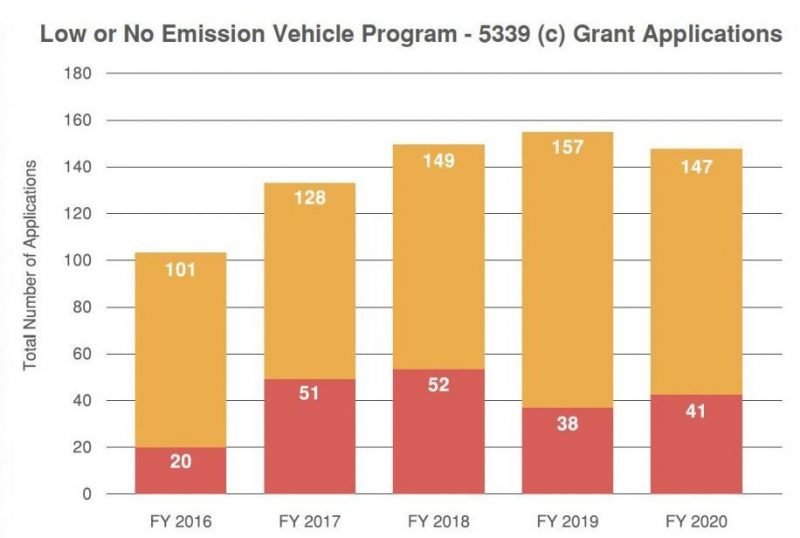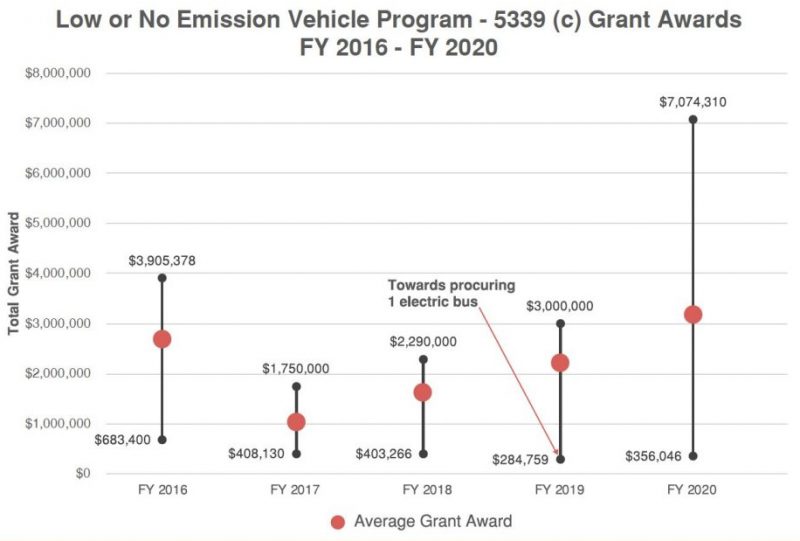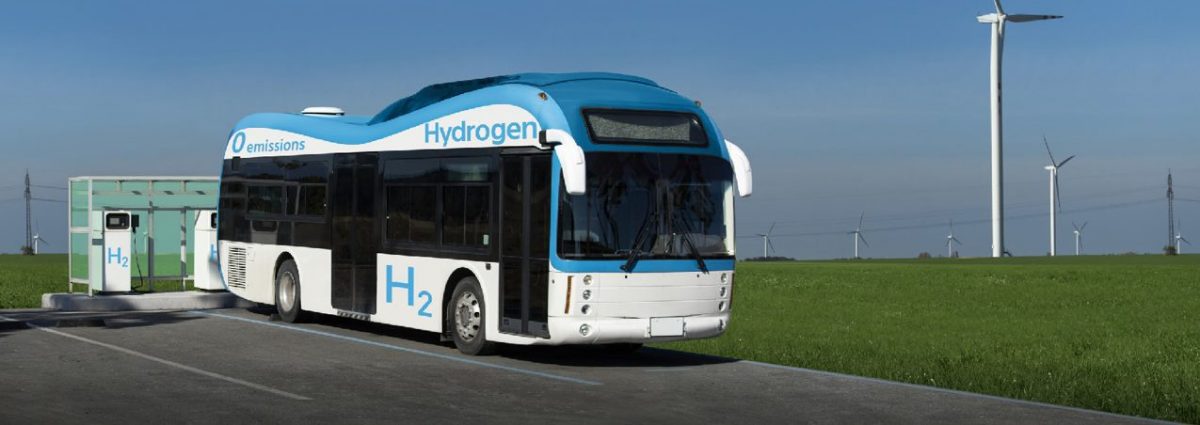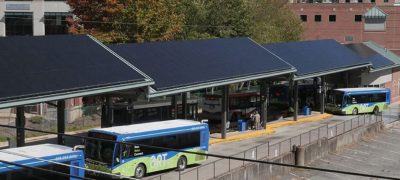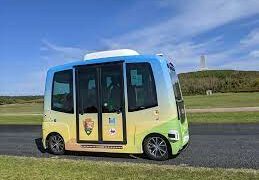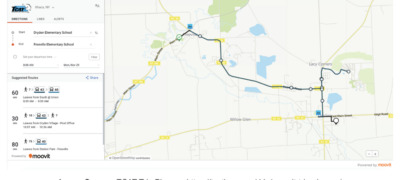Nationally, transportation sources emit 28.7% of greenhouse greenhouse gases annually. This includes emissions from over 185,000 public transit vehicles across the US that collectively traveled 5.12 billion miles and consumed almost 14 million barrels of diesel fuel in 2018.
The Biden administration has committed to reaching a net-zero emissions economy by 2050, which can be achieved in part by transitioning to low- and no-emission vehicles across transit modes. Additionally, many states, cities, and transit agencies have set their own goals of transitioning transit fleets to alternative fuels much earlier.
Low-emission vehicles (LEV) produce fewer emissions than those of internal combustion engines and include hybrid vehicles and vehicles powered by compressed natural gas (CNG) and propane. A zero-emission vehicle (ZEB) produces no tailpipe emissions. There are two types of zero-emission vehicles: battery-electric buses (BEB), which run on batteries charged by electricity, and hydrogen fuel cell vehicles (HFCV) which run on electricity from an on-board fuel cell of compressed hydrogen.
Low- and no-emission projects (vehicles and infrastructure) are both eligible for funding under the FTA Section 5339(c) Low or No Emission Vehicle Program.Other potential funding sources include FTA’s 5339(b) Buses and Bus Facilities Competitive Program, the Volkswagen Settlement, CMAQ, and the State Energy Program. Additionally, two-thirds of states have clean vehicle policies and financial incentives.
BENEFITS OF LOW/NO VEHICLES
- Cleaner vehicles create cleaner air
- Vehicles are often easier to maintain, resulting in lower maintenance costs
- Lower fuel costs
- Decreased dependency on oil and gas
- Help combat climate change
- Several capital funding opportunities
5339(c) LOW/NO PROGRAM QUICK FACTS
- Competitive grant program
- Eligible recipients include designated recipients, states, local government authorities, and Indian tribes
- Can apply for funds to procure vehicles and associated equipment, prepare facilities for low/no technologies, as well as associated incidental costs such as related workforce development, training and activities.
- Requires a zero-emission transition plan that demonstrates a long-term fleet management plan with a strategy for use of the current application with future acquisitions
- Applicants must examine the impact of the transition on the current workforce and how to avoid displacement
FUNDING
- Low-No funding tripled between FY 2016 and FY 2021
- $1 Billion increase in federal funds for Low-No (from 2021-2022) from the Federal Infrastructure Investment and Jobs Act
- 25% of funds must be for non-zero (low) emission vehicles and facilities
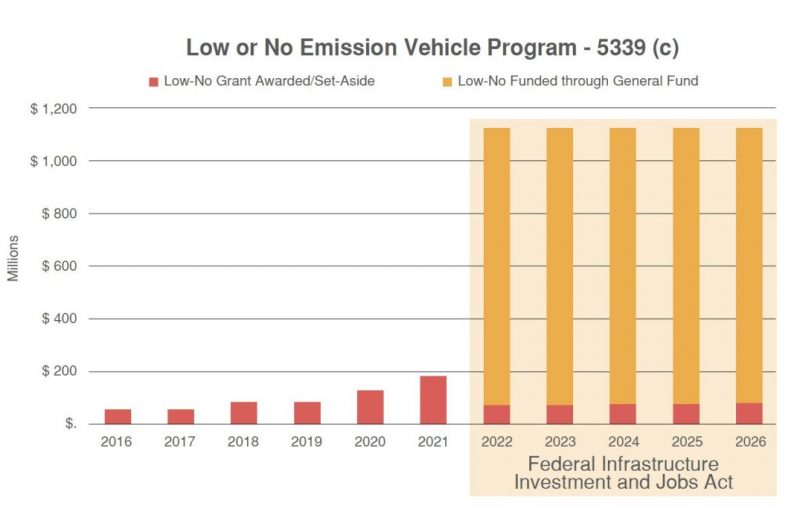
101 – 157
Number of Applicants Annually
20 – 52
Number of Awards Annually
20% – 40%
Percent of Applicants Funded
$1M to 3.2M
Average Grant Award
Applicants have been successful in
46 states
